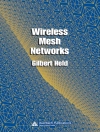One of the most basic laws of a web application is that the client, not the server, must initiate any communication between the two. There are a number of common–use cases where, ideally, the server would like to talk to the client—dashboards and monitoring apps, chat rooms and other collaborations, and progress reports on long–running processes. Comet (a.k.a. Reverse Ajax) provides a mechanism for enabling this. Comet is moderately complex to implement. But this practical, hands–on book gets you going.
- In Part 1 of this book, we start by examining the use cases, and look at the simple alternatives to Comet and how far they can satisfy your needs. In some situations, though, only Comet will do.
- In Part 2, we demonstrate how to set up and run a Comet–based application.
With this book, be a part of the next generation, Ajax 2.0.
Tabla de materias
What is Comet?.- The trouble with HTTP.- Some Common Use Cases.- How to Achieve Push.-Polling.- Piggy-backing.- Comet.- Raw Sockets.- Comparison & Evaluation.- Worked Example : Magnetic Poetry.-Issues & Techniques.- The two-request limit.- Pub-sub and server architectures.- Continuations versus naive Comet.- Implementations of Comet.- Cometd & Bayeux.- Reverse Ajax in DWR.- DWR worked example.
Sobre el autor
Phil Mc Carthy has eight years of experience in information technology, using Java, various dynamic languages, web development, etc. in the fields of videogame development, telecoms, and banking.












